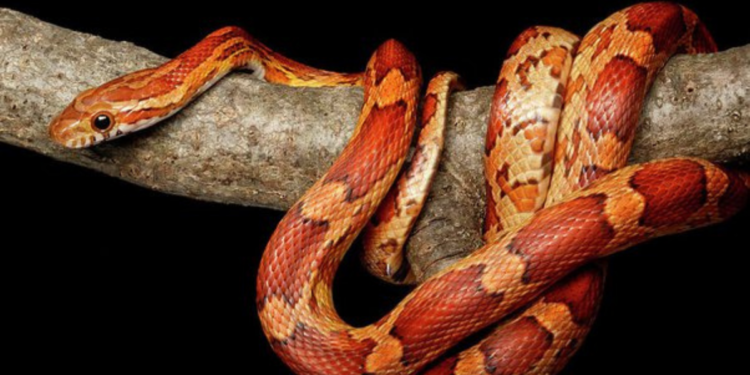Corn snakes, often cherished as captivating pets in the world of reptile enthusiasts, are remarkable creatures that captivate with their vibrant colors and gentle demeanor. While these snakes are known for their striking appearance and docile nature, one question frequently arises in the minds of those who admire them: “Do corn snakes have teeth?” In this article, we will delve into the intriguing world of corn snake dentition, shedding light on the mystery of their teeth and their role in the snake’s unique hunting and feeding behavior.
Understanding Corn Snakes: Remarkable Predators without Fangs
To begin our exploration of corn snake teeth, it’s essential to clarify that corn snakes do not possess fangs. Unlike venomous snakes, which employ fangs for the injection of toxic venom into their prey, corn snakes are nonvenomous colubrids. These gentle reptiles have no need for fangs to immobilize their quarry.
Do Corn Snakes Have Teeth?
So, if corn snakes lack fangs, what tools do they employ to subdue and consume their prey? Corn snakes are constrictor snakes, which means they rely on constriction rather than venom to incapacitate their victims. This fascinating adaptation is a testament to their unique hunting strategy.
Corn snakes wield approximately 20 to 30 tiny, needle-like teeth evenly spaced along their upper and lower jaws. Despite their diminutive size, these teeth are remarkably sharp, and they play a pivotal role in the snake’s hunting and feeding process. While these teeth might not be as imposing as fangs, they are perfectly designed for their intended purpose.
The Art of Predation: How Corn Snakes Utilize Their Teeth
When a corn snake encounters its prey, typically a small rodent, it employs its specialized teeth in a specific manner. Instead of injecting venom, as venomous snakes do, corn snakes use their teeth to grip and secure their quarry. The snake will bite into the prey animal as it begins the process of ingestion.
The teeth aid in securing the prey and serve as essential tools for moving it further into the snake’s digestive system. This process is akin to “chewing” the prey before it is swallowed whole. The snake uses its powerful muscles to manipulate the prey, ensuring it advances down the throat and into the digestive tract.
Ensuring Prey Capture: The Role of Corn Snake Teeth
The teeth of a corn snake play a crucial role in preventing the prey from escaping. These small, sharp teeth lock the prey into the snake’s mouth, ensuring it cannot wriggle free and elude its fate. The predator-prey relationship in the natural world is a delicate balance, and these teeth are the key to a corn snake’s success as a hunter.
A Closer Look at Corn Snake Teeth
To gain a deeper understanding of corn snake teeth, it’s important to examine their physical characteristics. These teeth are small, thin, and slightly angled, allowing them to effectively fulfill their role in the snake’s hunting process. They are arranged in relatively uniform rows along the upper and lower jaws, with the upper jaw typically housing more teeth than the lower.
Despite their sharpness and functionality, corn snake teeth are remarkably brittle. This fragility is a characteristic that sets them apart from the teeth of many other animals. However, it is not a disadvantage for corn snakes, as they can regenerate their teeth. This continuous process of tooth replacement ensures that the snake’s dental arsenal is always in top condition.
Occasional Tooth Loss: A Natural Phenomenon
It is not uncommon for corn snakes to lose a tooth occasionally while biting into their prey. This tooth loss is a natural occurrence and is typically not a cause for concern. As mentioned earlier, corn snakes continually regenerate their teeth, ensuring they have a fully functional set of teeth ready for their next meal.
In Conclusion: Do Corn Snakes Have Teeth?
Corn snakes stand out as unique predators with a gentle disposition in the world of snakes. While they may not possess fangs, their specialized teeth play a pivotal role in their hunting and feeding strategies. Though brittle, these tiny, sharp teeth are perfectly adapted to the snake’s constrictor lifestyle. They secure the prey, facilitate its ingestion, and prevent escape.
So, the next time you find yourself captivated by the beauty of a corn snake, you can appreciate not only its stunning appearance but also the remarkable functionality of its teeth. These small, unassuming dental structures are the unsung heroes of the corn snake’s success as a predator. Whether you are a dedicated reptile enthusiast or simply curious about the natural world, understanding the intricacies of corn snake teeth adds to the awe and wonder of these fascinating creatures.




